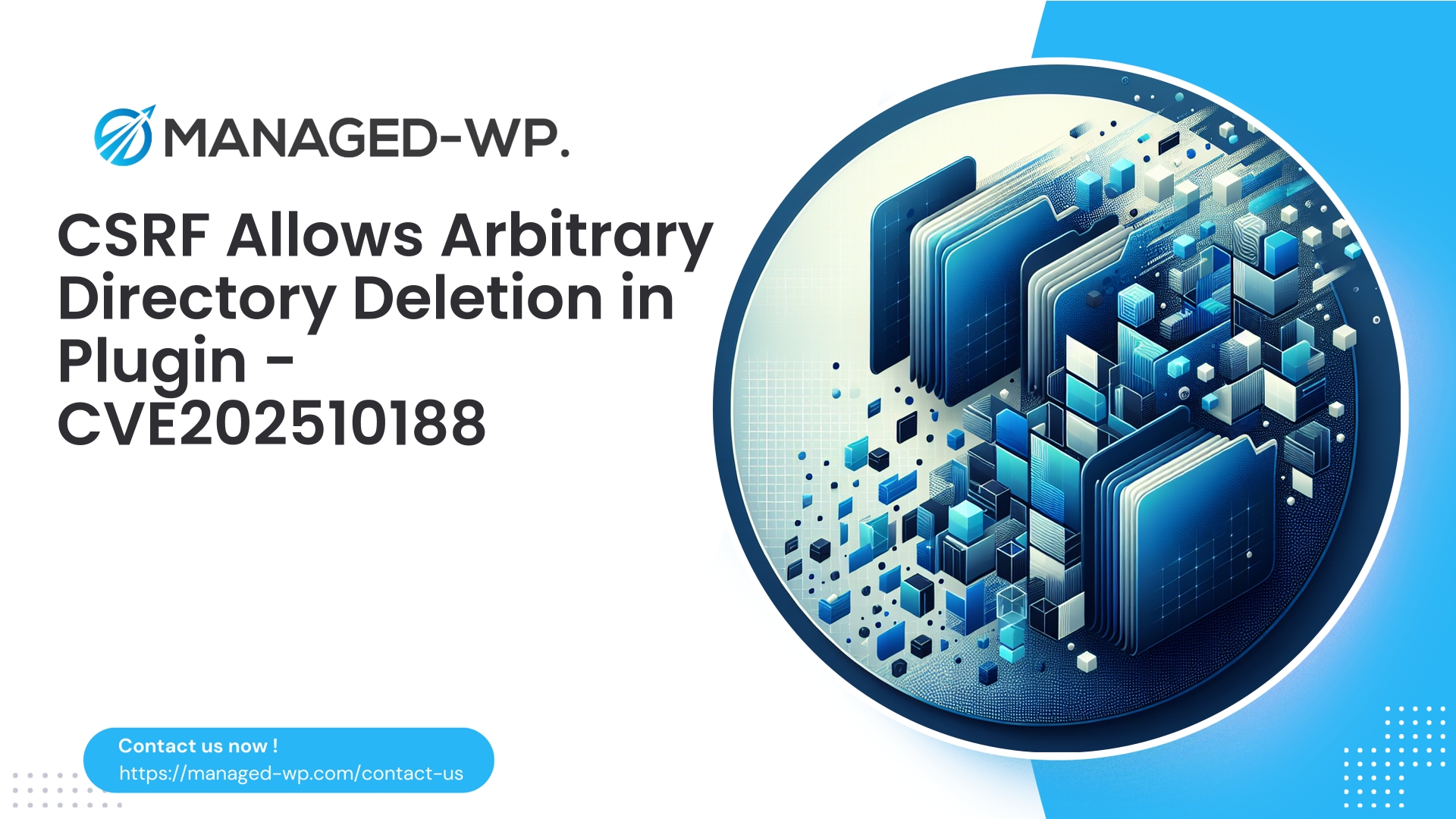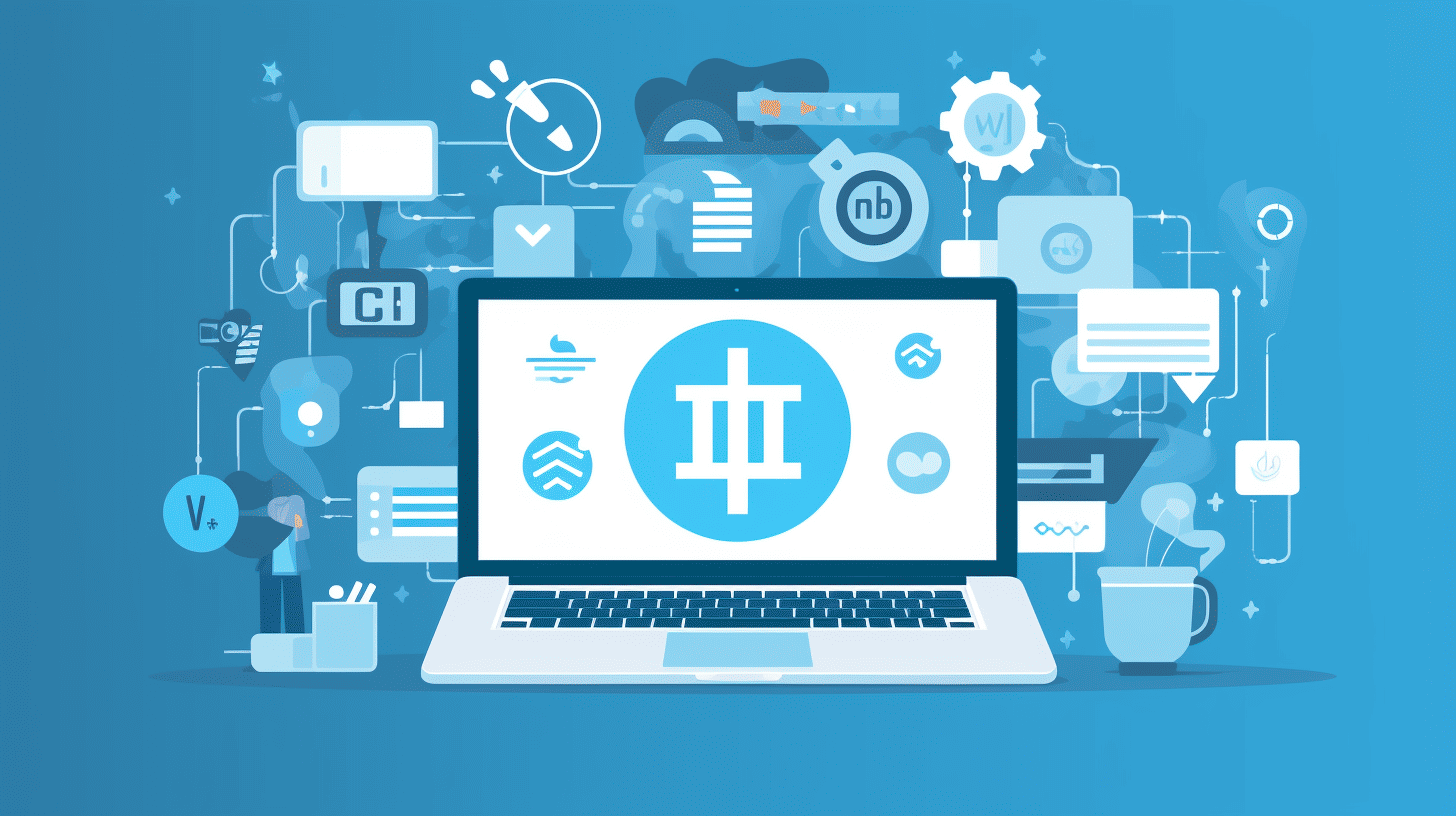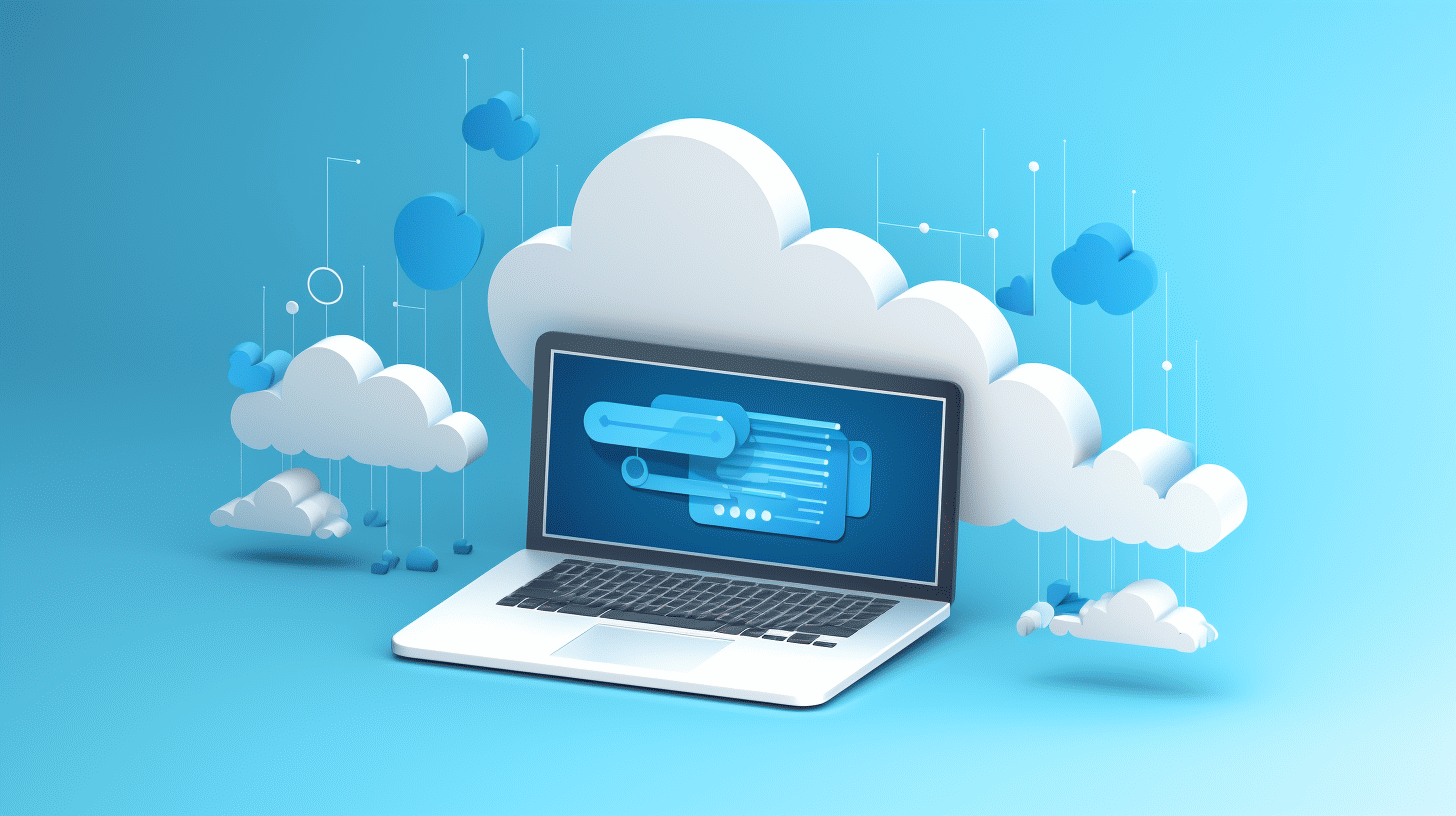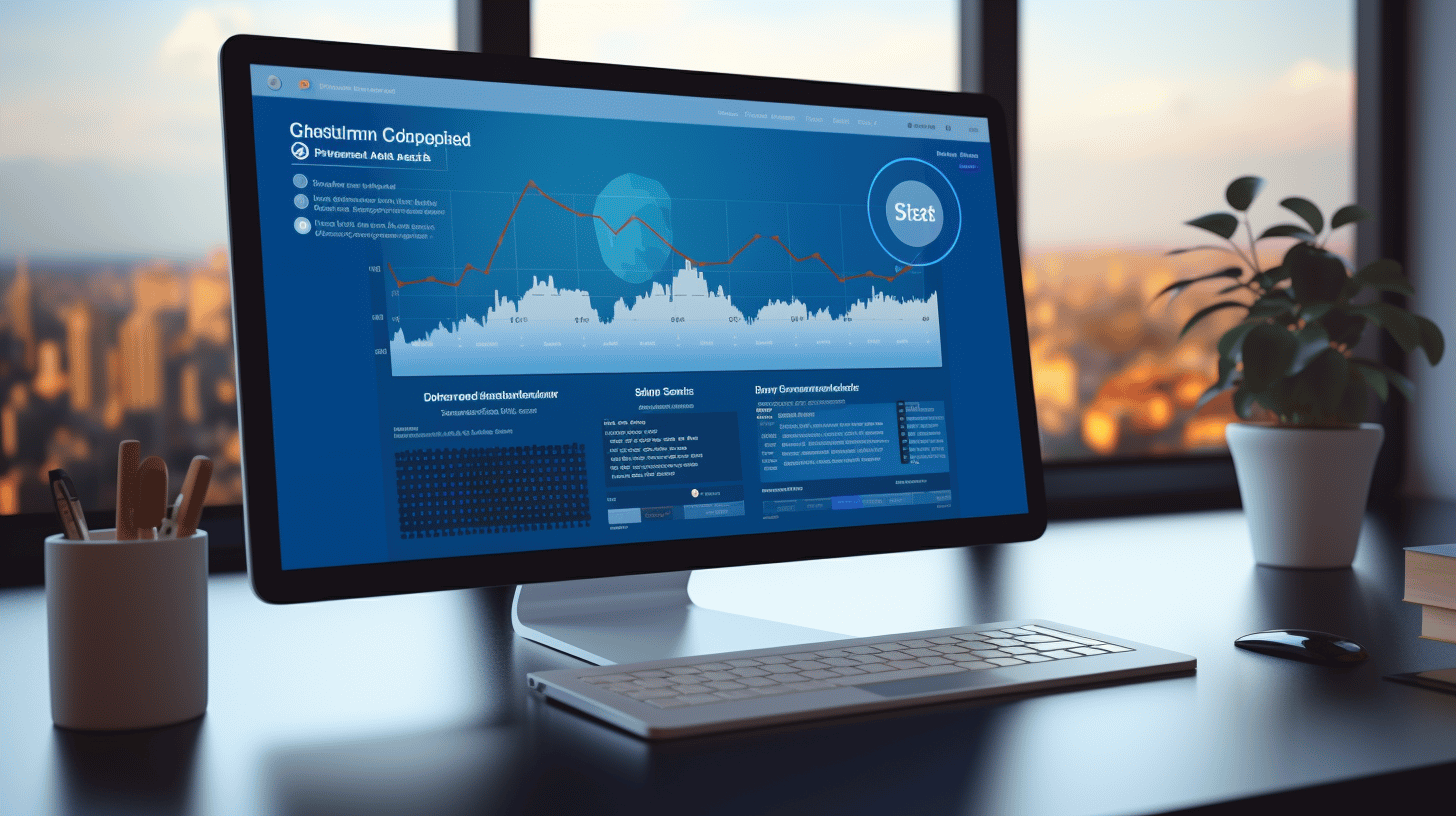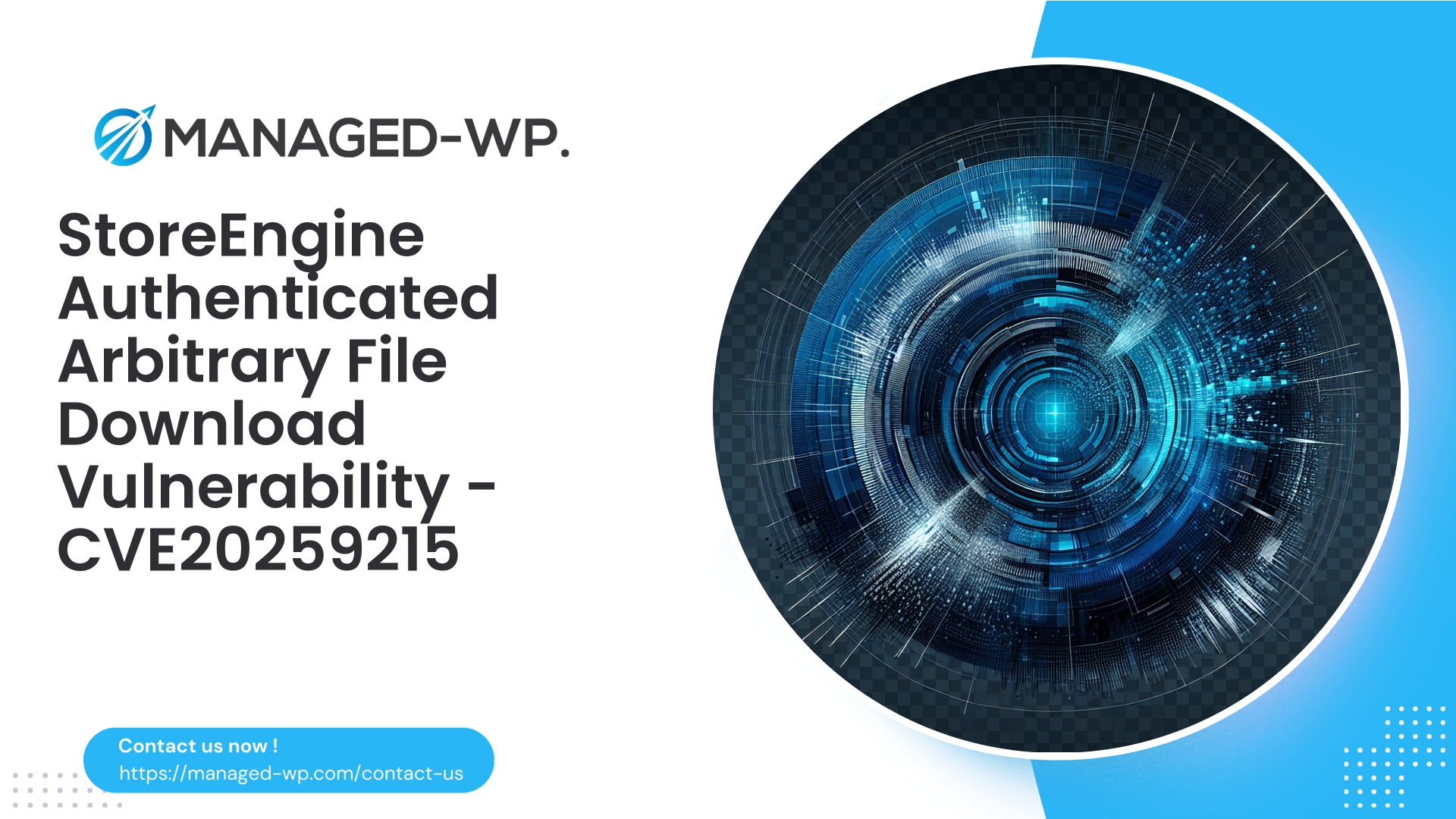| Plugin Name | The Hack Repair Guy’s Plugin Archiver |
|---|---|
| Type of Vulnerability | Cross-Site Request Forgery (CSRF) |
| CVE Number | CVE-2025-10188 |
| Urgency | Low |
| CVE Publish Date | 2025-09-16 |
| Source URL | CVE-2025-10188 |
CVE-2025-10188: CSRF Enables Arbitrary Directory Deletion in The Hack Repair Guy’s Plugin Archiver — Essential Actions for WordPress Site Operators
Author: Managed-WP Security Team
Date: 2025-09-16
Tags: WordPress, security, vulnerability, CVE-2025-10188, WAF, plugin
Executive Summary
- A Cross-Site Request Forgery (CSRF) vulnerability impacts The Hack Repair Guy’s Plugin Archiver (versions ≤ 2.0.4), allowing attackers to delete directories within
/wp-content. This vulnerability is tracked under CVE-2025-10188 and resolved in version 3.1.1. - The consequences include loss of plugins, themes, user uploads, and potential severe site instability or data loss.
- Immediate mitigation requires updating the plugin to version 3.1.1 or newer. If immediate updates are unfeasible, disabling the plugin, applying firewall rules, and securing
wp-contentare critical interim measures. - At Managed-WP, we employ advanced virtual patching, continuous monitoring, and guidance to help clients fortify their sites, detect compromises, and recover effectively.
Introduction — The Importance of Prompt Action
WordPress plugins are powerful tools that extend site functionality, but they also introduce risks when poorly secured. The CVE-2025-10188 vulnerability represents a serious threat to sites using The Hack Repair Guy’s Plugin Archiver. This flaw allows attackers to bypass request validation and execute directory deletions within /wp-content, potentially causing widespread data loss and site outages.
While the CVSS rates this vulnerability as medium-low (5.4), the real-world impact is significant. Deleted uploads, themes, or plugins can break your site unexpectedly. This article provides a professional overview of the technical vulnerability, practical impacts, detection methods, containment and recovery strategies, secure development practices, and the role of Web Application Firewalls (WAFs) in mitigating such risks.
Overview of the Vulnerability
- Plugin affected: The Hack Repair Guy’s Plugin Archiver
- Vulnerable versions: 2.0.4 and earlier
- Fixed in: Version 3.1.1
- Vulnerability type: Cross-Site Request Forgery (CSRF) enabling arbitrary deletion of directories in
/wp-content - CVE identifier: CVE-2025-10188
- Discoverer: Security researcher (publication date September 16, 2025)
The core issue is the absence of proper request validation (no nonce or capability checks) for an action that deletes directories. This allows malicious actors to craft requests which, when opened by an authenticated administrator’s browser, delete critical directories under wp-content.
Technical Details — How CSRF Facilitates Directory Deletion
CSRF exploits the trust a site places in a logged-in user’s browser session by tricking the browser into submitting unauthorized requests. WordPress plugins must validate requests through nonces and permission checks before altering site data.
Typical plugin vulnerabilities include:
- Missing nonce verification functions like
wp_verify_nonceorcheck_admin_referer. - Insufficient user capability verification using
current_user_can(). - Exposing file deletion functionality on unauthenticated or improperly protected AJAX or admin endpoints.
- Accepting unsanitized file paths allowing directory traversal.
In this incident, an exposed deletion endpoint accepted a directory path under wp-content without validating the request origin or user permissions, enabling unauthorized deletion via CSRF.
Why the Official CVSS May Underestimate Risk
CVSS scores provide a baseline but cannot capture all contextual factors:
- Deletion of critical directories like plugins, themes, or uploads can cause major outages and data loss that may not be fully represented by the score.
- Not all sites maintain comprehensive or immutable backups, increasing recovery difficulty.
- Easy automation of exploits raises risk of widespread mass attacks.
Attack Scenarios & Exploit Potential (Without Code)
- Targeted exploitation: Attackers desiring to disrupt a specific site trick an admin to visit malicious pages triggering deletion.
- Mass exploitation: Automated attacks targeting many vulnerable sites to disrupt services en masse.
- Persistence efforts: Malicious actors may combine deletion attacks with removing other security plugins or defenses.
Note: We do not distribute exploit code, focusing instead on defense and recovery.
Immediate Actions for Site Administrators
If you utilize this plugin, follow these prioritized steps:
-
Update to version 3.1.1 or later
- Install the patched version immediately to eliminate the vulnerability.
- Where possible, test in staging first but prioritize security for live sites.
-
If updating immediately isn’t feasible: disable the plugin
- Deactivate via the WordPress dashboard or rename the plugin directory via FTP (
wp-content/plugins/plugin-archiver). - Understand this disrupts plugin functionality but prevents further deletion attacks.
- Deactivate via the WordPress dashboard or rename the plugin directory via FTP (
-
Implement Web Application Firewall restrictions
- Use a WAF or reverse proxy to block or rate-limit requests to the plugin’s deletion endpoints.
- Specifically, block POST requests or suspicious parameter combinations associated with this vulnerability.
- Managed-WP clients receive immediate virtual patch rules tailored to stop these requests.
-
Secure filesystem permissions and verify backups
- Set strict file and directory permissions consistent with WordPress best practices (e.g., 755 for directories, 644 for files).
- Confirm recent backups of
wp-contentexist to enable recovery if deletions have occurred.
-
Conduct site scans and audit logs
- Run malware and file integrity scanners, paying special attention to missing or altered plugins, themes, and uploads.
- Review HTTP access logs around the discovery date for suspicious POST requests or unusual IP addresses accessing plugin admin endpoints.
-
Rotate credentials and enable multi-factor authentication
- If compromise is suspected, reset all administrative passwords and API keys.
- Enforce two-factor authentication to reduce future risk.
-
Execute recovery procedures
- Restore deleted folders from reliable backups or hosting provider snapshots.
- Only re-enable the plugin after updating to the secure version.
- Consult professional recovery assistance if backups are unavailable.
Detecting Exploitation — Key Warning Signs
- Missing or corrupted plugin/theme directories inside
wp-content/pluginsandwp-content/themes. - Loss of uploaded media assets from
wp-content/uploads. - Unexpected 404 errors for previously accessible media or plugin files.
- Administrative logs showing unusual POST requests to plugin endpoints with suspicious referrers or IPs.
- Site errors (HTTP 500) potentially triggered by missing components.
- Timestamp irregularities on files or directories under
wp-content.
Developer Recommendations — Defensive Coding Practices
Plugin developers must prevent this vulnerability class through rigorous coding standards:
- Implement nonce and capability checks
- Generate and verify nonces with
wp_nonce_field()andcheck_admin_referer()orwp_verify_nonce(). - Apply capability checks using
current_user_can()with appropriate privileges before state-changing operations.
- Generate and verify nonces with
- Restrict access to authenticated admin contexts
- Do not expose deletion or file operations via unauthenticated AJAX or public endpoints.
- Sanitize and canonicalize file paths
- Use
realpath()and restrict paths to a safe base directory likeWP_CONTENT_DIR. - Reject any paths containing
../or other traversal vectors.
- Use
- Utilize WordPress Filesystem APIs
- Avoid using direct PHP file system functions on user inputs without validation.
- Apply least privilege principles
- Require multiple confirmations and robust permission checks for dangerous file actions.
- Maintain logs and audit trails
- Log admin actions related to file system modifications for forensics and accountability.
- Integrate security testing
- Incorporate automated tests and third-party security reviews focusing on file operation endpoints.
Example Pseudocode for Secure Deletion Endpoint Checks
// Illustrative pseudo-code for validation (do not copy verbatim)
if ( ! is_admin() ) {
wp_die( 'Unauthorized access' );
}
if ( ! current_user_can( 'manage_options' ) ) {
wp_die( 'Insufficient permissions' );
}
if ( ! isset( $_POST['nonce'] ) || ! wp_verify_nonce( $_POST['nonce'], 'plugin_delete_action' ) ) {
wp_die( 'Invalid request' );
}
$requested_dir = sanitize_text_field( $_POST['directory'] );
$base_dir = wp_normalize_path( WP_CONTENT_DIR );
$target_path = wp_normalize_path( $base_dir . '/' . ltrim( $requested_dir, '/' ) );
if ( strpos( $target_path, $base_dir ) !== 0 ) {
wp_die( 'Invalid directory path' );
}
// Proceed with logged deletion using WordPress Filesystem API
How Managed-WP Supports You — Protective Measures While You Patch
As a dedicated managed WordPress security provider, Managed-WP employs a multi-layered approach to reduce risk during the patching window:
- Virtual Patching: Our WAF rules preemptively block malicious requests that target this specific vulnerability, halting exploitation attempts immediately.
- Targeted Request Blocking: We exclusively restrict access to deletion endpoints and suspicious parameters, allowing your site’s normal traffic to proceed unimpeded.
- Continuous File Integrity Scanning: Our automated systems monitor wp-content for unexpected changes and alert site operators to anomalies.
- Behavioral Monitoring: We detect abnormal admin POST request patterns indicative of automated or malicious activity.
- Emergency Incident Response: For confirmed compromises, our team guides recovery, hardening, and remediation steps.
Managed-WP customers are promptly provisioned with virtual patch updates to safeguard sites before updating the plugin.
Important: Virtual Patch Is a Temporizing Solution
Virtual patching serves as a critical stopgap but does not substitute for applying the official plugin update. Updating to version 3.1.1 or later remains the only definitive resolution.
Recovery Checklist After Confirmed Compromise
- Isolate the site by placing it in maintenance mode or limiting public access.
- Create a full server snapshot and preserve system/log files prior to remediation.
- Restore deleted plugin, theme, and upload directories from backups or host snapshots.
- Upgrade the plugin to the patched version 3.1.1 or newer.
- Conduct thorough malware/backdoor scans and verify no unauthorized admin users or suspicious tasks exist.
- Reset all sensitive credentials (admin passwords, FTP, DB, API keys).
- Increase monitoring and alerting for at least 30 days to detect recurring anomalies.
Long-Term Hardening & Best Practices
- Keep WordPress core, themes, and plugins fully updated, prioritizing security releases.
- Enforce multi-factor authentication and robust password policies for all administrative users.
- Minimize high-privileged users and apply least-privilege principles rigorously.
- Deploy and properly configure a Web Application Firewall to preemptively block exploitation attempts.
- Maintain immutable offsite backups with versioning to enable effective and rapid recovery.
- Restrict administrative endpoints by IP or require additional verification for high-risk operations.
- Regularly audit plugin code or engage managed security partners prior to deploying new plugins.
Guidance for Hosting Providers and Agencies
- Implement automated daily backups with multi-version retention.
- Offer host-managed filesystem snapshots to facilitate rapid recovery.
- Monitor traffic for widespread exploit attempts and block identified malicious sources at network perimeter.
- Provide incident response playbooks, including communication channels and escalation procedures.
Message to Plugin Developers
- Thank you for addressing this issue quickly in version 3.1.1.
- Future releases should incorporate more rigorous testing of file operation endpoints, including path canonicalization and capability checks.
- Consider establishing a coordinated vulnerability disclosure process to streamline handling of such issues in the future.
Frequently Asked Questions
Q: After the vulnerability disclosure, my site is missing files. What should I do?
A: Immediately halt further modifications, create a full server snapshot, then restore wp-content from a clean backup. Afterwards, update the plugin to version 3.1.1. If backups are unavailable, contact your hosting provider and a security professional urgently.
Q: Does this vulnerability allow attackers to execute arbitrary code?
A: No. This issue involves unauthorized directory deletion. However, deleting security or monitoring plugins can exacerbate risk by disabling protections, so a thorough investigation after compromise is essential.
Q: Can I rely only on WAF rules and skip plugin updates?
A: No. WAF virtual patches buy time but are not substitutes for applying security updates. Update the plugin as soon as possible to fully close the vulnerability.
Managed-WP Security Recommendations — Summary
- Update the plugin to version 3.1.1 or later immediately.
- If immediate updates are impossible, deactivate the plugin and enable Managed-WP’s WAF virtual patches.
- Verify and maintain reliable backups.
- Conduct malware scans and analyze logs for indicators of compromise.
- Implement recommended long-term hardening steps for sustained security.
Get Started with Managed-WP’s Free Plan — Protect Your Site Today
Activate Managed-WP Basic (Free) for Essential Security Coverage
Need a fast, zero-cost approach to reinforce your WordPress site security? The Managed-WP Basic (Free) plan provides essential protections including a managed firewall, unlimited bandwidth, robust Web Application Firewall (WAF), malware scanning, and mitigation against top OWASP risks. These features help prevent exploitation attempts and keep your site safe while you apply necessary updates. Sign up here: https://my.wp-firewall.com/buy/wp-firewall-free-plan/
Final Thoughts — Security Requires Constant Vigilance and Layering
This vulnerability underscores the need for a layered security model: plugin authors must implement secure coding standards, site owners must enforce updates and back up data, and managed security providers add detection and prevention layers. Automating updates where possible and testing recovery workflows remain critical to resilience.
If you require assistance:
- Follow the containment and recovery steps outlined above.
- Managed-WP customers can contact support for virtual patch deployment, site scanning, and incident remediation guidance.
- If not yet using managed security, consider our Basic free plan to gain immediate foundational protections: https://my.wp-firewall.com/buy/wp-firewall-free-plan/
References
- CVE-2025-10188 — Public vulnerability record.
- Plugin release notes — Version 3.1.1 contains the official fix; update without delay.
Stay vigilant,
Managed-WP Security Team











